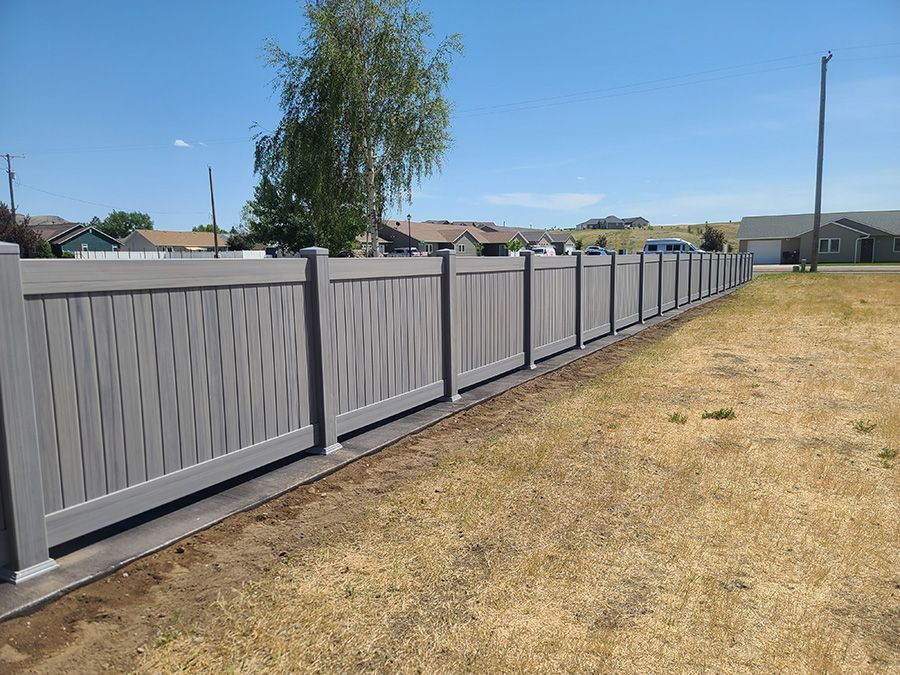Discover how to incorporate sustainable fencing materials and practices into your farm to advance your environmentally conscious goals.
Why Sustainability in Farming Matters
Sustainability in farming isn't just the crops you grow or the livestock you raise. It also includes how you maintain your farm’s infrastructure, such as fencing. The right fencing solutions can help minimize environmental impact, conserve resources, and enhance the long-term health of your farm while complementing eco-friendly farming practices.
By choosing sustainable fencing, you're taking a conscious step to reduce waste and energy consumption, contributing to a healthier ecosystem overall.
Sustainable Fencing Materials
Choosing the right materials is the first step in creating a more eco-friendly farm fence. Here are some top options:
- Bamboo Fencing: Bamboo is a fast-growing, sustainable material that provides a strong and aesthetic option. It’s biodegradable and does not require harmful chemicals, making it an ideal choice for organic farmers.
- Recycled Metal Fencing: Reusing scrap metal or other recycled materials for fencing helps lower waste and decrease the environmental cost of manufacturing new materials. Recycled metal is durable and long-lasting, providing a sturdy solution for your farm.
- Wood from Sustainable Sources: Choose wood from certified sustainable forests to ensure that your fencing material is eco-friendly. Opt for untreated wood to avoid using harmful chemicals in your farming practices.
These materials offer an eco-conscious solution without compromising on quality, ensuring your farm remains both protected and green.
Sustainable Power Options for Electric Fencing
Electric fences are a popular choice for managing livestock, but traditional systems can be energy-intensive. Fortunately, renewable energy options are enabling you to power your electric fence sustainably:
- Solar-Powered Electric Fencing: Solar panels provide a clean energy source for electric fences. These systems are quick to set up, especially for remote areas, and can save you money while reducing your farm’s carbon footprint.
- Wind-Powered Systems: For farms in breezy regions, wind-powered generators can offer another renewable energy option. These systems are best for farms that rely on wind power for other needs.
By utilizing renewable energy sources to power your electric fence, you’re taking a significant step toward cutting your farm’s energy consumption and footprint.
Eco-Friendly Installation Practices
The installation process of your fence is just as important as the materials you choose. Low-impact installation practices guarantee that your fence doesn’t disrupt the natural environment or cause environmental harm:
- Minimize Soil Disruption: Minimize heavy machinery that could damage the land or soil structure. Instead, use hand tools to install posts and wires.
- Use Natural Markers: Mark your fence line using stones, plant-based markers instead of plastic flags or sprays.
- Install Fencing with Minimal Clearing: Keep the existing vegetation intact wherever possible. Fencing should be installed without heavy clearing or alteration of natural habitats.
By following these practices, you help preserve the integrity of the land while building an eco-friendly farm infrastructure.
Striking a Balance Durability with Environmental Responsibility
When choosing sustainable fencing solutions, durability should not be compromised. Here are a few tips to balance both:
- Choose Long-Lasting Materials: Select materials that are strong, like bamboo or recycled metal, to lower the need for frequent replacements.
- Invest in High-Quality Installation: Ensure your fence is securely set up, as this can significantly extend its lifespan and cut down on the need for repairs.
- Consider Maintenance Needs: Opt for materials that require minimal maintenance, reducing the use of harmful chemicals and water over time.
By balancing durability with sustainability, you can build a fence that not only serves your farm effectively but also minimizes its overall environmental impact.
Achieving Sustainability Goals with the Right Fence
Choosing the best fencing solution for your farm takes careful consideration of sustainability, durability, and cost. By selecting sustainable materials, utilizing renewable energy, and following low-impact installation practices, you can achieve your sustainability goals without compromising on the function or security of your fence.
Start small by adding sustainable fencing solutions to your farm’s infrastructure, and over time, it’s possible to make your entire operation more eco-conscious. After all, a sustainable farm isn’t just about what you grow—it’s about how you build and maintain your environment too.
